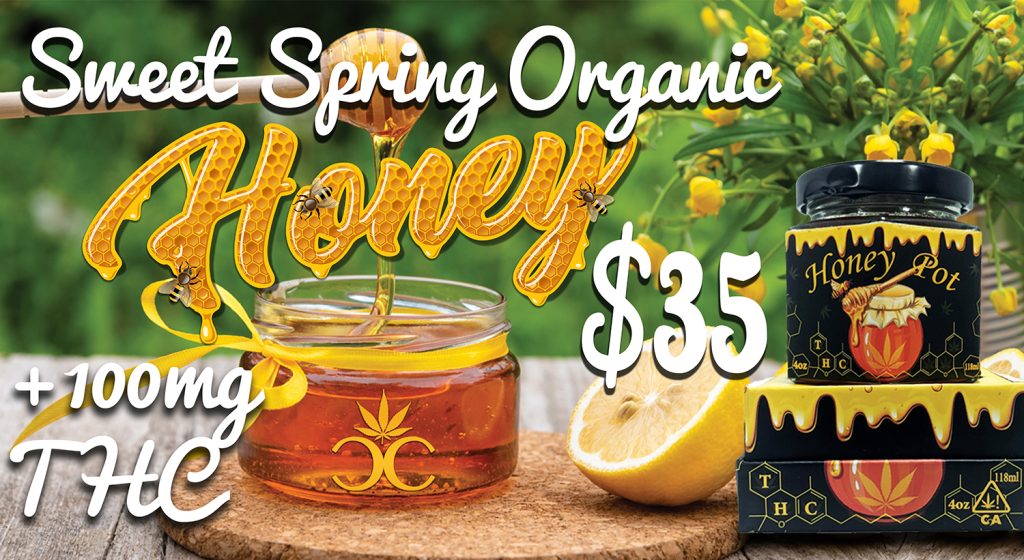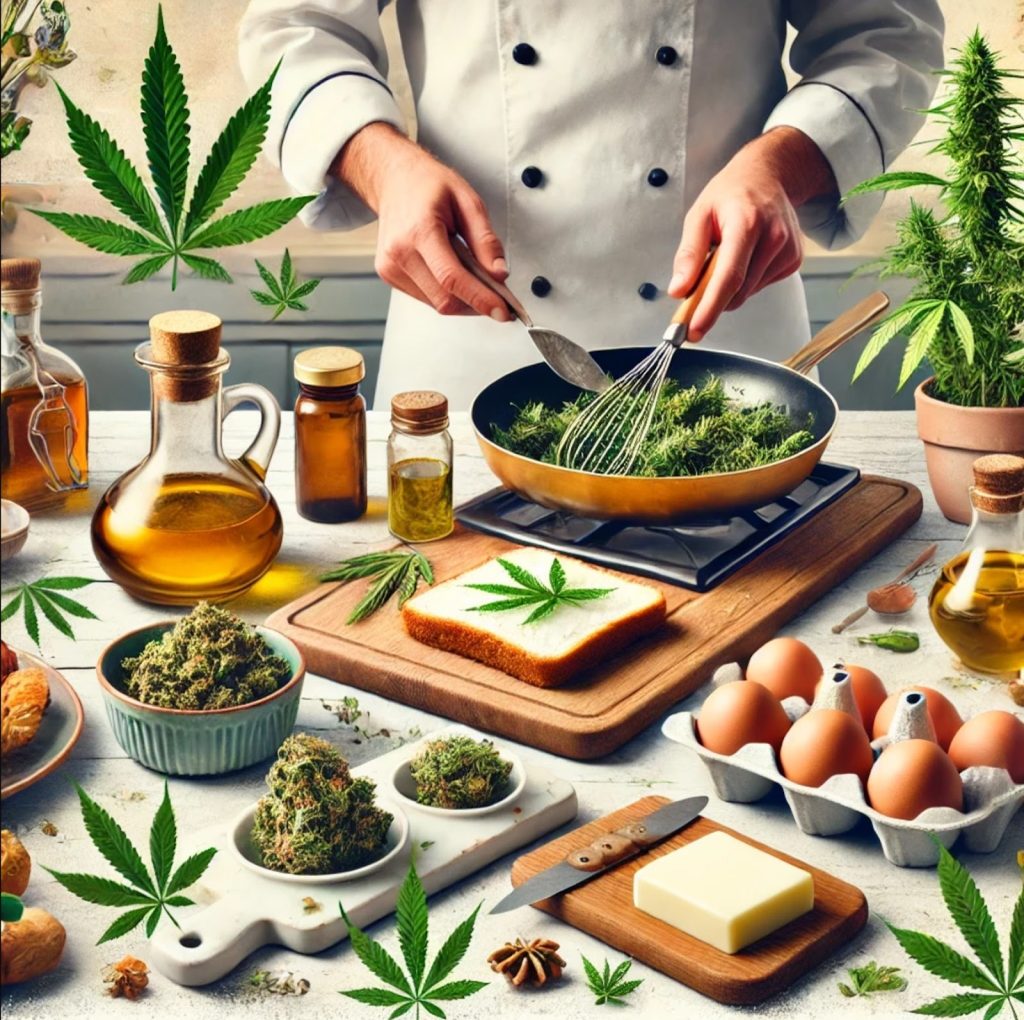The best way to begin cooking with cannabis is to look for easy recipes to elevate your next meal. Cooking with cannabis is an effective way to enjoy the effects of cannabis without inhalation. You can either buy infused foods premade, or you can make them at home. Cannabis plant seeds have historically been used as a food source, with the plant being a rich source of protein and fiber, and cooking with cannabis is a natural progression in this plant’s abundant offerings. (1)
Canna Culture is the Bay Area’s most trusted brand in the cannabis industry, dedicated to helping the community #JoinTheCulture. Canna Culture offers the most exclusive prices and deals alongside premium delivery throughout Santa Clara County. We test each of our products to ensure we are offering only the most premium THC and CBD products.
To view our current selection of products, please visit our current menu. To directly reach our San Jose location, please call (408) 264-7877 or fill out our contact form.
To learn about the latest news in cannabis, please visit our blog.
Contents
Benefits of Edible Cannabis
Edibles–food products that contain cannabis–offer a variety of benefits for clients interested in the relaxing effects of cannabis who may not be interested in inhaling smoke or want to experience a new way of consuming cannabis. Edible cannabis provides a long-lasting effect, often longer than smoking, which can help provide extended relief for clients utilizing cannabis for pain management. Certain strains of cannabis can help improve sleep, aiding those who may suffer from insomnia and other sleep disorders and stimulating the appetite, which is ideal for clients undergoing hunger-reducing treatments. Edible cannabis is highly convenient as it is more discreet and portable compared to more traditional methods of consumption. With a wide variety of flavors and products to choose from, there is an enjoyable option for each client, no matter how picky of an eater they are.
How Edible Cannabis is Absorbed

After being consumed, edible cannabis is broken down during digestion. The THC in the consumable item then enters the gastrointestinal tract and is absorbed into the bloodstream. Before the THC can be circulated throughout the body, it is first metabolized in the liver. The THC is then turned into a compound called 11-hydroxy-THC, a more potent compound that can make the effects of edible cannabis last longer and feel stronger than other forms of consumption, such as inhalation. (2) The absorption process of cannabis is why it can take noticeably longer for edibles to take effect.
What is Decarboxylated Cannabis?
Decarboxylation is the process of heating cannabis to activate the molecular compounds that allow clients to feel its relaxing effects. In cannabis flowers, THC exists as its non-psychoactive form, THCA. (3) Decarboxylating the cannabis before its infusion is essential in converting THCA to THC but requires attention when being performed. The temperature of the oven can affect the quality of the cannabinoids and even the flavor and effects of the final product. While THCA has its benefits, without converting the cannabinoids into their active forms, they cannot produce the wellness benefits that many seek. (3)
Infusion Methods
Infused Butter
One of the most common infusion methods when making homemade edibles is the use of cannabis-infused butter, or “cannabutter.” By heating cannabis flowers slowly in melted butter, the cannabinoids can be extracted and bound to the fats. (4) Infused butter can be used in place of normal butter in recipes that clients are interested in infusing. Clients interested in cannabutter are recommended to combine equal amounts of decarboxylated cannabis, butter, and water into a saucepan or double-boiler, allowing the butter to melt fully with the water before adding in the flower. After simmering on low heat for a few hours or until fully infused, the mixture should be strained through a cheesecloth before being placed in the fridge to set.
Infused Oils
Cannabis-infused oils are another great and versatile choice for clients interested in homemade edibles. Common oils such as coconut and olive oil can easily be infused and are very shelf-stable. Clients can use infused oils in both sweet and savory dishes, easily substituting out all or a partial amount of the oil in their recipe depending on their preference and level of dosage. To make cannabis-infused oil, clients are recommended to combine their decarboxylated cannabis with their oil of choice in a double boiler, simmering on low for a few hours or until properly combined. Clients should strain the oil with a cheesecloth before use.
Infused Tincture
Another great infusion method is to create an infused tincture using alcohol. Grain alcohol or other high-proof spirits can extract cannabinoids from cannabis flowers, creating a tincture that can be added to a multitude of dishes. (5) Clients interested in creating a tincture should combine their alcohol and decarboxylated flower into a sealed container before allowing it to sit in a dark, cool place. Clients should let it steep for a minimum of 24 hours or longer. After it is properly infused, it should be strained with a cheesecloth before being enjoyed. This method can have a stronger taste compared to other methods, so it is recommended to infuse recipes that can help mask the sharpness of the alcohol.
Recipe Ideas
There are many ways that cannabis can be used in cooking, both savory and sweet. We have compiled a list of fun recipe ideas that utilize infused butter, oil, and tinctures to help inspire your next great recipe.
Cannabis Butter
- Classic cookies: You can never go wrong with a chocolate chip cookie! Loved by all, this recipe can easily be converted by substituting the butter from your favorite recipe with an infused butter for a twist on the classic treat.
- Garlic bread: Cover slices of baguette with a mix of parsley, minced garlic, parmesan, sea salt, and your infused butter. Toast to your liking before enjoying!
Cannabis Oil
- Infused guacamole: Mash avocados with lime juice, onions, tomatoes, jalapeno, cilantro, and any other ingredients you enjoy in your guacamole. Drizzle your infused oil before serving with chips, veggies, or another delicious bite.
- Roasted vegetables: Take a variety of your favorite vegetables, such as carrots, potatoes, or asparagus, and set them on a tray. Drizzle with your preferred amount of infused oil before sprinkling sea salt, cracked pepper, or another seasoning before roasting in the oven. Once ready, this dish can either be eaten as an accompaniment or on its own as a healthy snack.
Alcohol-Based Tincture
- Infused cocoa: Stir your preferred dosage of tincture into hot milk or cream before adding in your cocoa mix of choice. Top it off with marshmallows and whipped cream before enjoying it!
- Infused mocktails: A few drops of tincture can be added to any drink to create a wellness mocktail! Add a small amount of tincture to your drink of choice, such as a sparkling lemonade or soda, for a refreshing and relaxing drink.
Results
After eating their newly infused treats, clients can expect to experience improved pain management, reduced levels of anxiety, and an increased amount of relaxation and enjoyment. Clients who use edible cannabis more will have a deeper understanding of their ideal dosage. It can take anywhere between 30-120 minutes for effects to set in, but clients can enjoy a stronger and longer-lasting set of effects.
Cannabis Delivery in San Jose
At Canna Culture, we offer premium delivery throughout Santa Clara County and Silicon Valley. Our concierge delivery service extends out to Los Gatos in the west and San Martin to the south, offering a free delivery radius of 20 miles. Orders placed shortly before closing will not be able to be delivered within the same day. Clients placing orders between the hours of 3 PM and 7 PM are asked to be more patient regarding delivery time as traffic is heavier during this time of day. We accept both cash and card payments for delivery orders, but we ask that clients paying in cash either use exact or close change as our drivers carry a minimal amount of cash change. For clients who are in the area but are unable to come in, we offer curbside pickup.
To start placing your cannabis delivery order, you can view our selection of products listed on our current menu. To directly reach our San Jose location, please call (408) 264-7877 or fill out our contact form to find out what the minimum is for your delivery address.
VIP Program
Sign up for our Canna Culture VIP Rewards Program and become a member to receive exclusive discounts and special offers. Our VIP members receive a variety of exciting perks, including:
- 2% Back For Every Dollar Spent Before Taxes
- Bring Friends Or Family And Get A Pre-roll For Less Than $2
- Be The First To Get Notified About Our Demo Days With BOGOs
All VIPs are also given updates regarding upcoming events and ongoing specials before our regular clients.
To receive VIP exclusive offers, special discounts, and swag, please visit our VIP Reward Program.
FAQ
What is the difference between THC and CBD?
THC is primarily a component that reacts with the endocannabinoid system. THC is a psychoactive component of the cannabis plant and can help clients feel more relaxed and creative while alleviating symptoms of chronic pain.
How long will it take for clients to feel the effects of edible cannabis after ingestion?
It can take between 30-120 minutes for clients to feel the effects of an edible. Multiple factors can affect the speed of absorption in the body, such as one’s metabolism, eating habits, and weight.
Am I required to decarboxylate my cannabis before infusing it?
Clients interested in making their own edibles will need to decarboxylate their cannabis before use. This is because the cannabis plant itself contains THCA, the inactive form of THC. Heat is required to convert THCA into THC, the necessary ingredient used for infusions and relaxation.
References
- Krüger M, van Eeden T, Beswa D. Cannabis sativa Cannabinoids as Functional Ingredients in Snack Foods—Historical and Developmental Aspects. Plants. 2022;11(23):3330. doi:https://doi.org/10.3390/plants11233330
- Lemberger L, Martz R, Rodda B, Forney R, Rowe H. Comparative Pharmacology of Δ9-Tetrahydrocannabinol and its Metabolite, 11-OH-Δ9-Tetrahydrocannabinol. Journal of Clinical Investigation. 1973;52(10):2411-2417. doi:https://doi.org/10.1172/jci107431
- Friesen L. Decarboxylation— A Multi-Purpose Process Step. Cannabis Science and Technology. 2024;7(2):12-1312-13. https://www.cannabissciencetech.com/view/decarboxylation-a-multi-purpose-process-step
- Barrus D, Capogrossi K, Cates S, et al. Tasty THC: Promises and Challenges of Cannabis Edibles. Methods Rep RTI Press. Published online November 15, 2016. doi:https://doi.org/10.3768/rtipress.2016.op.0035.1611
- Addo PW, Sagili SUKR, Bilodeau SE, et al. Cold Ethanol Extraction of Cannabinoids and Terpenes from Cannabis Using Response Surface Methodology: Optimization and Comparative Study. Molecules. 2022;27(24):8780. doi:https://doi.org/10.3390/molecules27248780
- National Library of Medicine. Therapeutic Effects of Cannabis and Cannabinoids. Nih.gov. Published 2017. https://www.ncbi.nlm.nih.gov/books/NBK425767/


